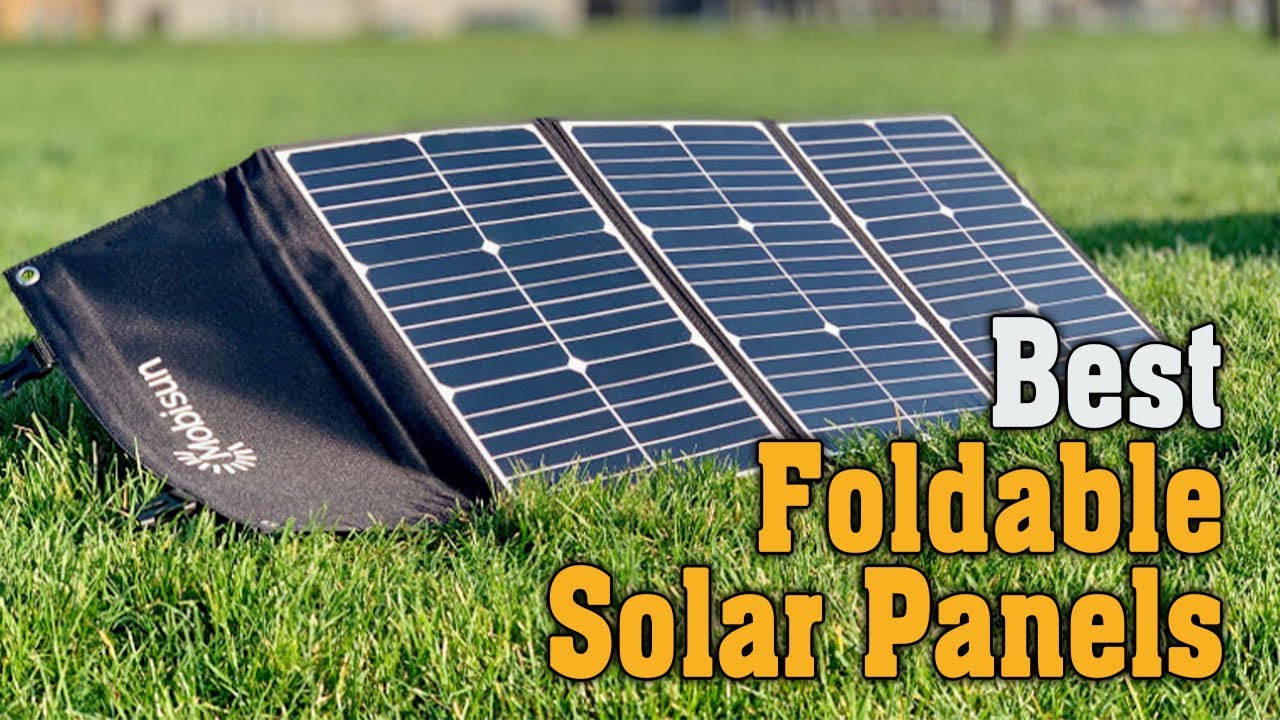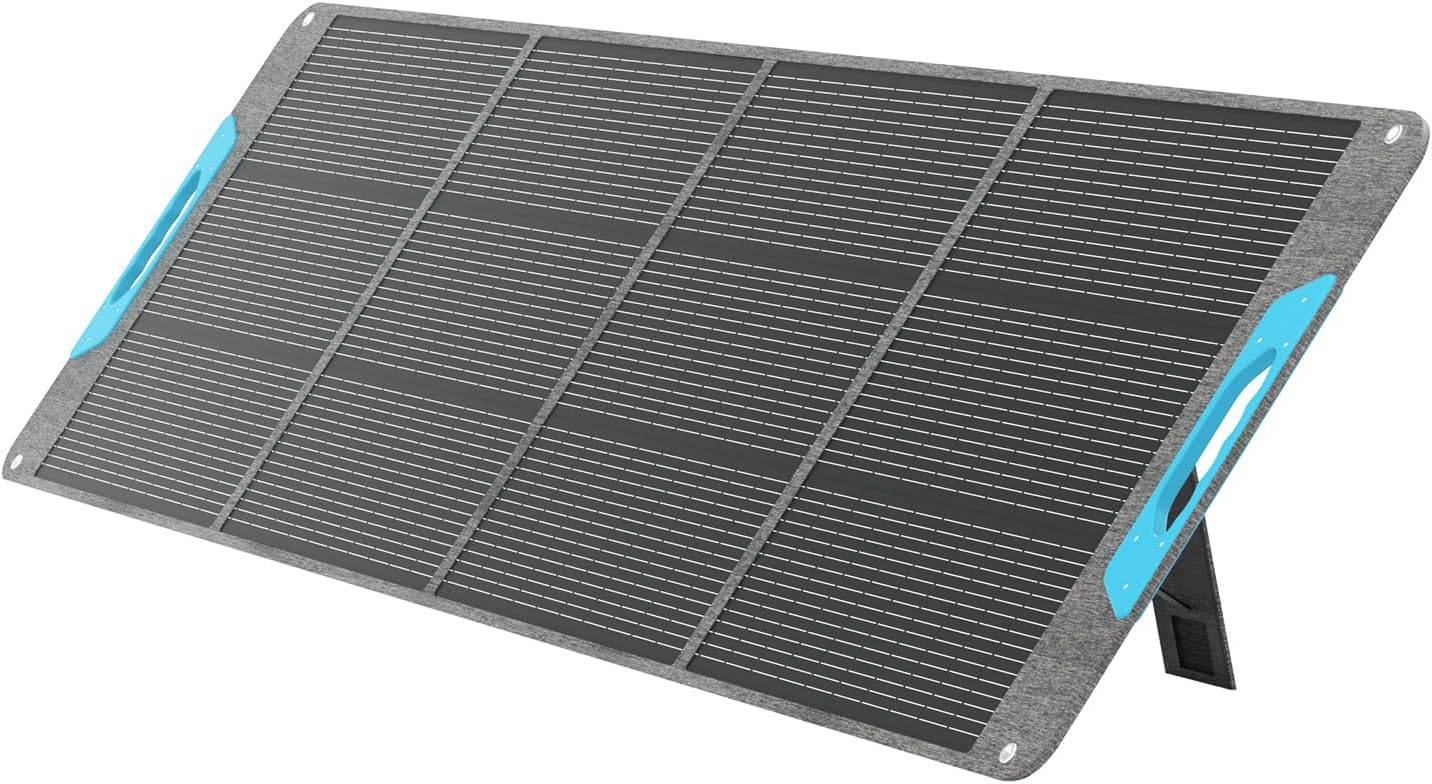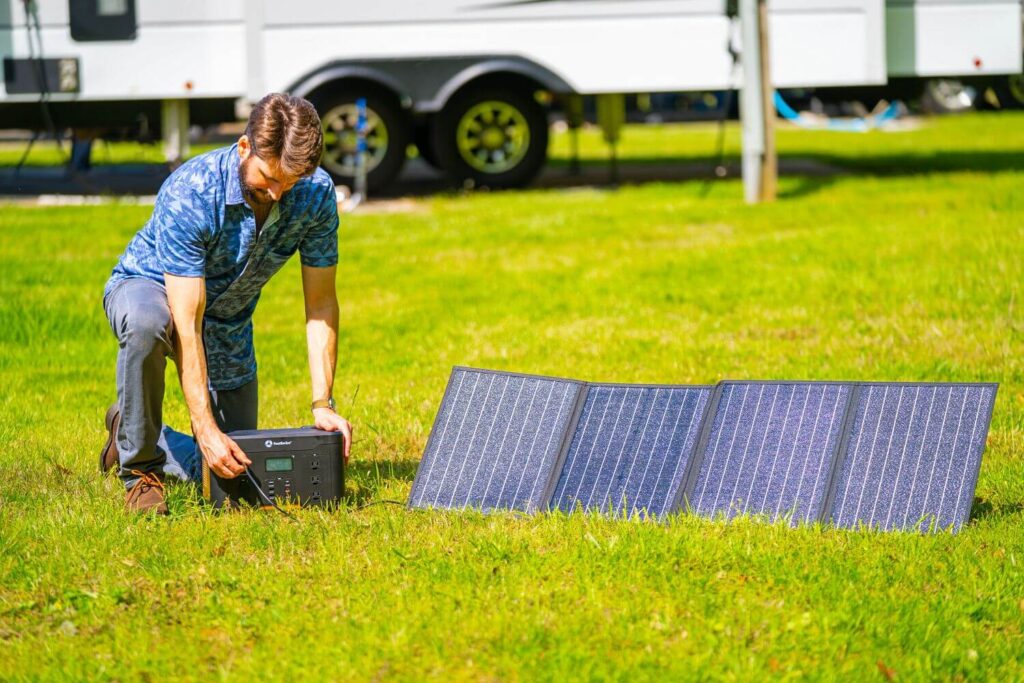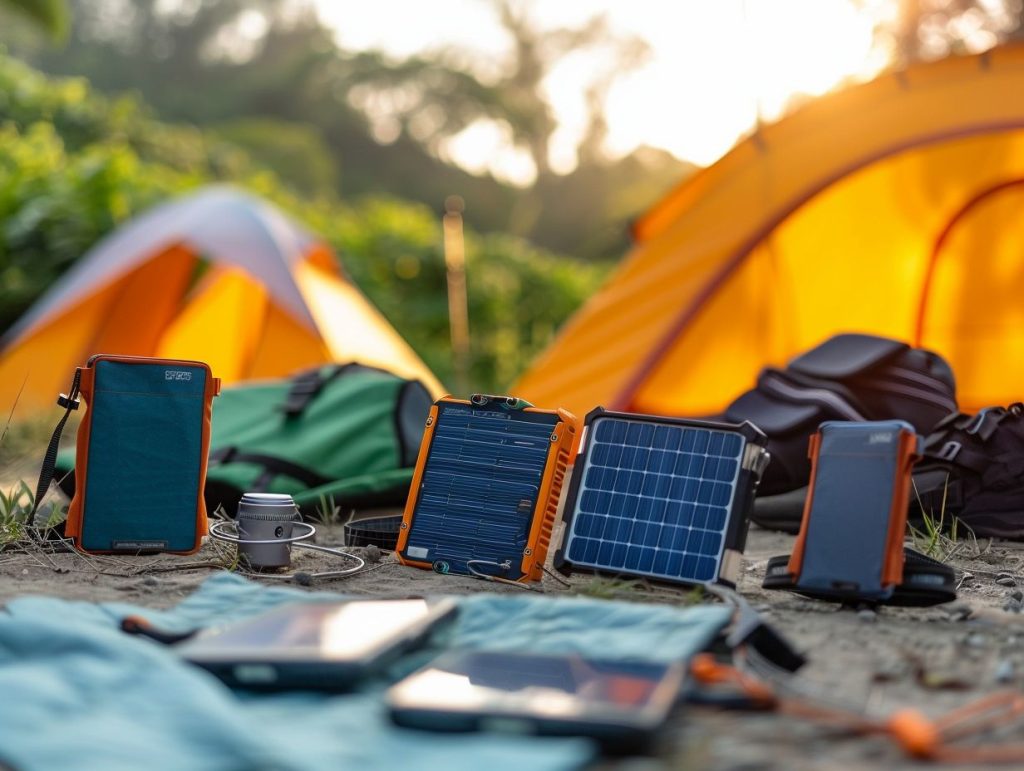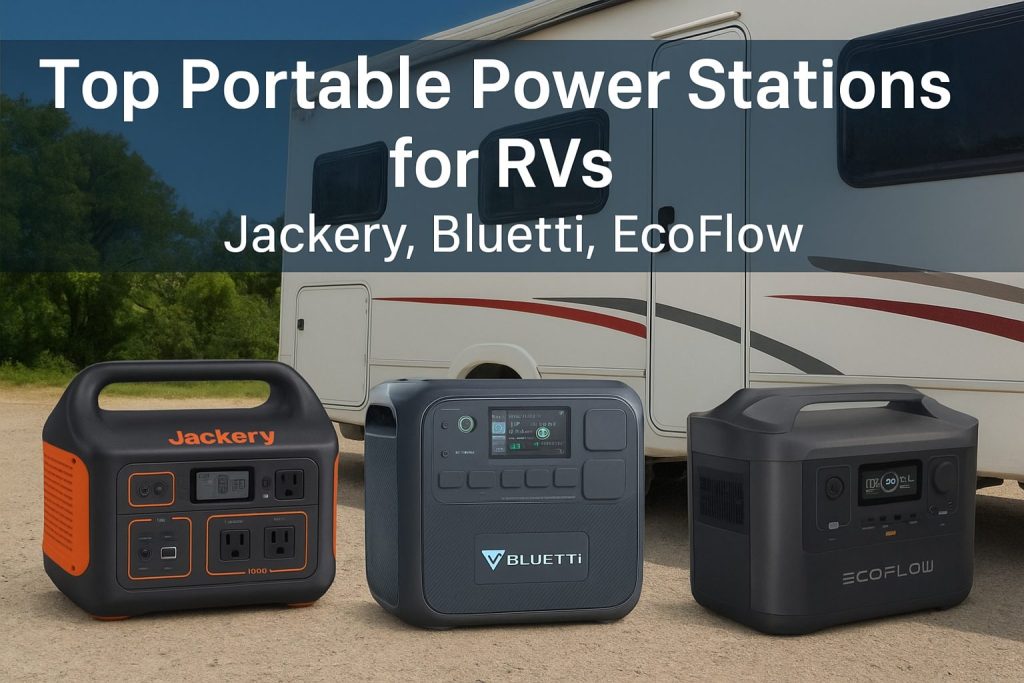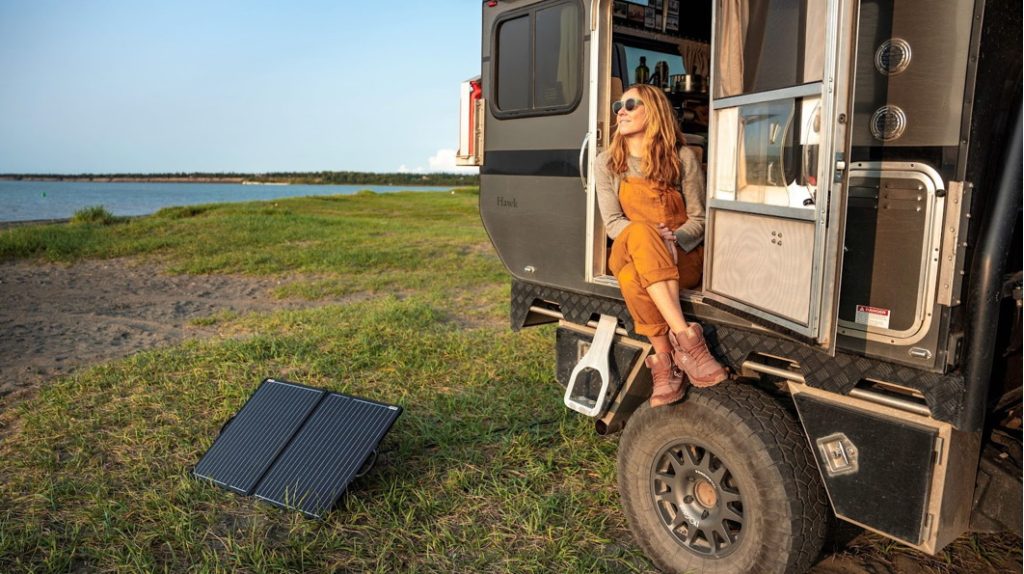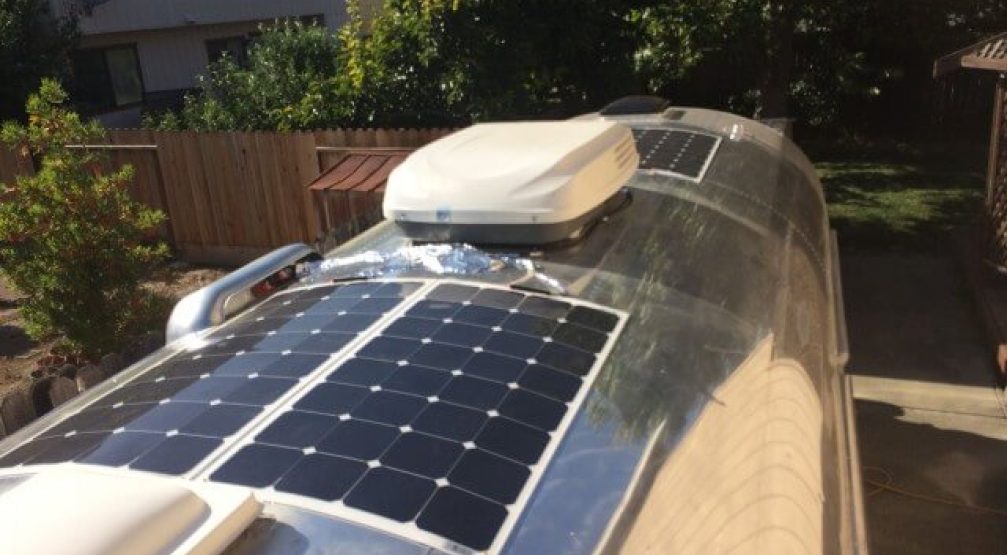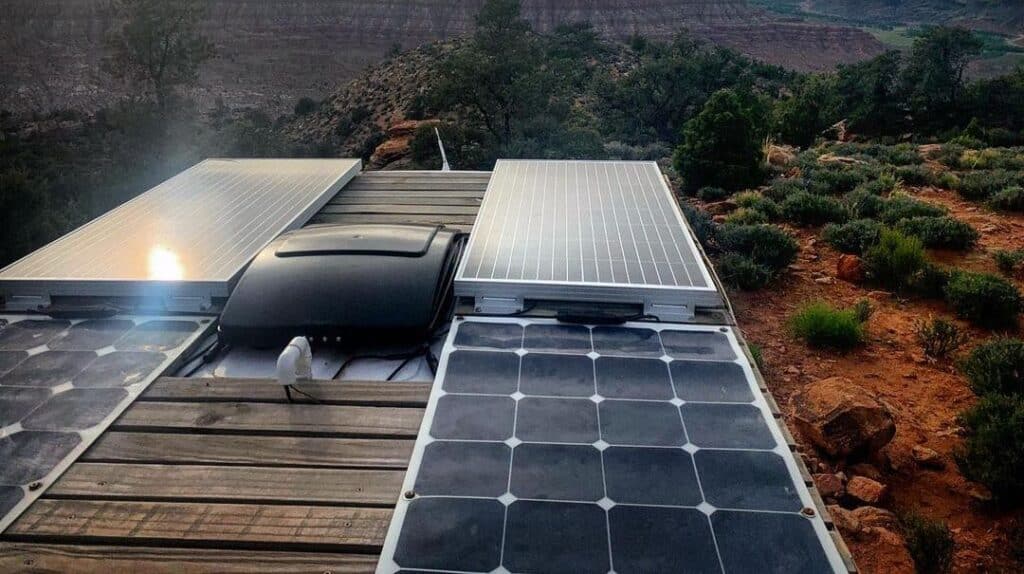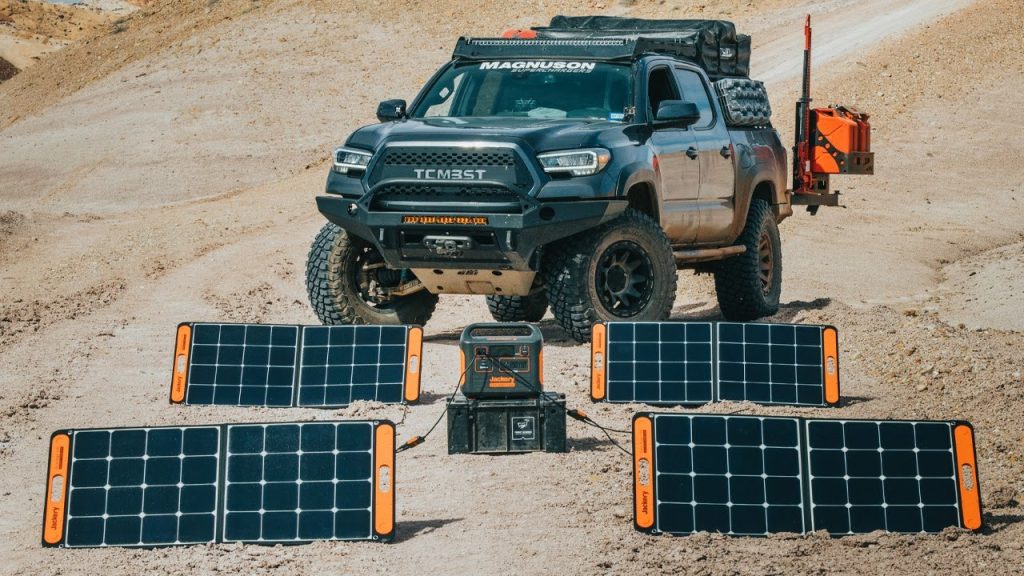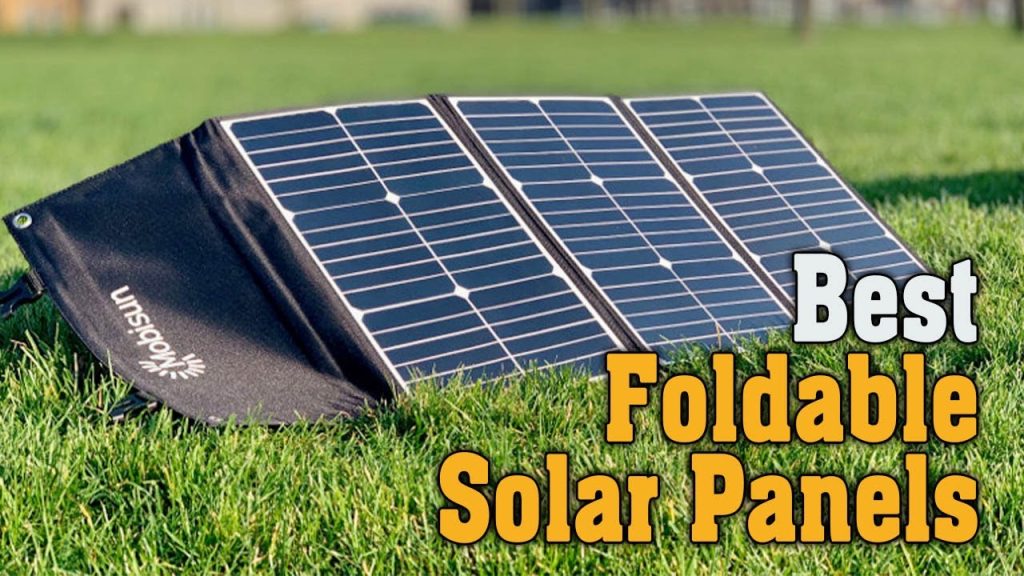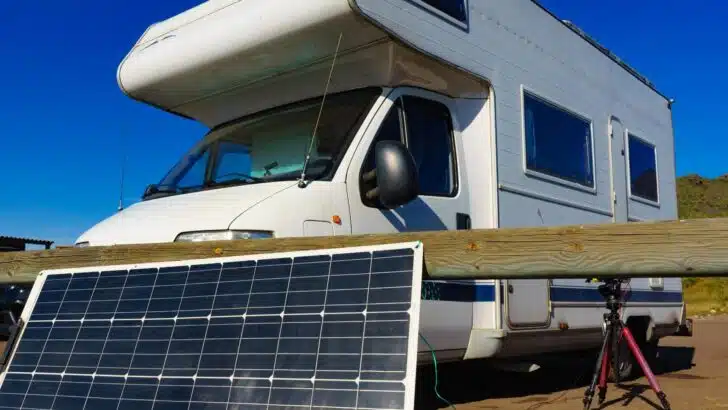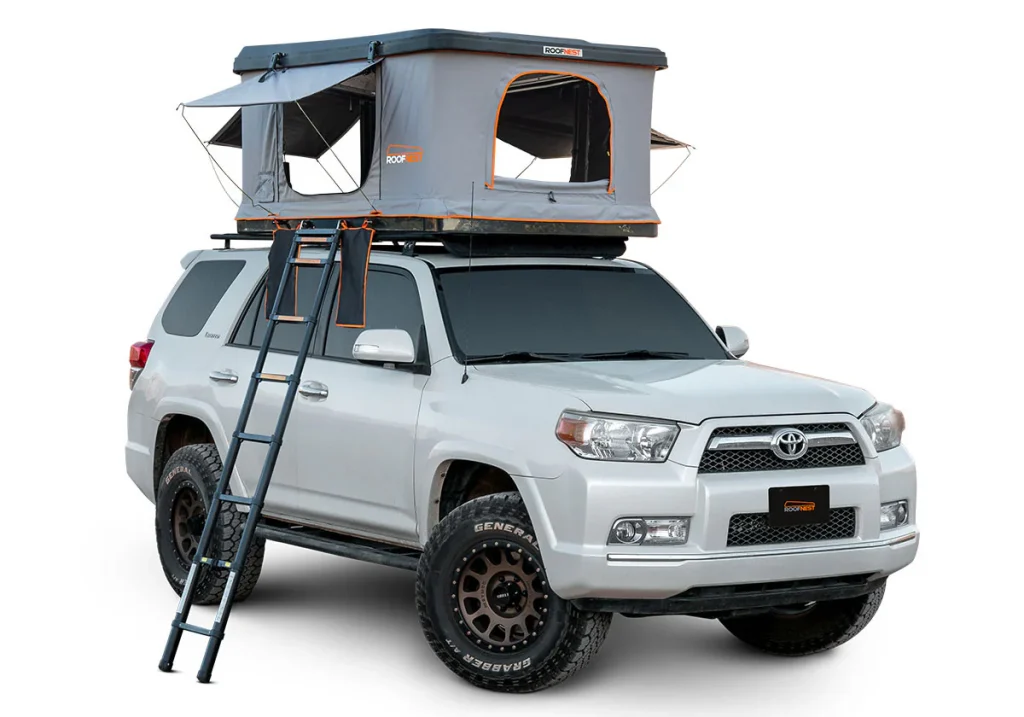For overlanders, the best foldable solar panels are compact enough to stow on a roof rack or in a drawer, rugged enough to survive dirt and rain, and powerful enough to keep a fridge, power station, and phones topped up all trip long.
Quick preview — five top picks for overlanding
-
Jackery SolarSaga 100W — ultra-portable, user-friendly, and perfect for solo trips or topping off small power stations.
-
Jackery SolarSaga 200W — higher-output Jackery option for faster charging of larger batteries and longer trips.
-
Renogy 200W Portable Foldable — N-Type cells and multiple outputs (MC4 + USB-C PD) make this a workhorse for vanlife and RV setups.
-
ALLPOWERS SP027 100W — lightweight, value-oriented 100W panel that’s easy to stow and deploy for quick-day use.
-
BigBlue SolarPowa 150W — strong mid-size option with N-Type efficiency for a great power-to-pack-size balance.
Why Foldable Solar Panels Are Ideal for Overlanding
Portability vs. rigid roof arrays
Rigid roof panels are great for permanent installs — they provide constant, stable generation and streamline wiring — but they come with tradeoffs: weight up top, permanent mounting, and limited placement flexibility when your rig is parked in shade or at an awkward angle. Foldable solar panels bridge that gap: you get serious wattage when you need it, and compact storage when you don’t.
Foldables let you move the panel to where the sun is best (ground, tailgate, or roof), avoid shade from trees or awnings, and remove the panels when driving or when you want to reduce wind drag and theft risk. For overlanders who value versatility and multi-use gear, foldables are often the smarter choice.
Key benefits for overlanding
-
Quick deploy: Most foldables open and set up in minutes with built-in kickstands or simple props — ideal when you arrive at camp and want power fast.
-
Packable: Fold flat or into a compact bundle that fits under a bed, in a drawer, or strapped to a roof box. No permanent roof drilling required.
-
Dual mounting options: Use them on the roof rack for longer sun exposure or lay them on the ground/tailgate where sunlight is better.
-
Flexible placement to avoid shade: Trees, awnings, and vehicles create patchy shade — being able to move the panel 3–10 meters can double output in many cases.
-
Multi-use: When not charging a power station, many foldables have USB ports or can directly charge devices — they also work great for temporary setups (day trips, emergency charging, extra boost on cloudy days).
Overlanding use cases
-
Running a 12V fridge: A common overlanding load — foldable solar panels can trickle-charge or maintain a fridge through the day if sized correctly (typical recommendation: 100–300W depending on fridge draw and sunlight).
-
Topping off power stations: Foldables are ideal companions to portable power stations (Jackery, EcoFlow, Bluetti, etc.) — you can position panels for max sun and feed an MPPT controller to the station.
-
Charging phones, tablets & cameras: Built-in USB-A/USB-C outputs on many models let you charge devices without an inverter — convenient and efficient.
-
Lighting & small accessories: Power LED camp lights, fans, and USB gadgets directly or via a power station — great for long evenings at remote campsites.
Foldable panels give overlanders a flexible, low-commitment way to add reliable daytime generation without the permanence or weight penalties of fixed roof systems.
Quick Comparison Snapshot (At-a-Glance)
Before diving into in-depth reviews, here’s a quick side-by-side comparison of the top 5 best foldable solar panels for overlanding in 2025. This table highlights their power output, weight, IP rating, and ideal use cases — helping you quickly spot which model suits your setup best.
| Product | Rated Output (W) | Cell Type | Approx. Weight | IP Rating | Key Outputs | Ideal For |
|---|---|---|---|---|---|---|
| Jackery SolarSaga 100W | 100W | Monocrystalline | ~9.1 lbs | IP65 | MC4 | Lightweight camping, hiking, or short overland trips |
| Jackery SolarSaga 200W | 200W | Bifacial IBC | ~17.5 lbs | IP68 | MC4 | Fast charging for larger portable power stations |
| Renogy 200W Portable | 200W | N-Type (16BB) | ~13.9 lbs | IP65 | MC4 + USB-C PD | Vanlife setups, RVs, and extended expeditions |
| ALLPOWERS SP027 100W | 100W | Monocrystalline | ~7.9 lbs | IP66 | MC4 | Budget-friendly, ultralight overlanding setups |
| BigBlue SolarPowa 150W | 150W | N-Type | ~11.4 lbs | IP68 | MC4 | High-output, compact solar for minimalist rigs |
Top Picks — Best Foldable Solar Panels for Overlanding
After reviewing dozens of models on the market, here are the five best foldable solar panels that stand out for durability, charging performance, and true overlanding practicality. Each product below includes a full breakdown, key specs, real-world pros and cons, and a quick tip to help you get the most out of your setup in the wild.
#1 — Jackery SolarSaga 100W (foldable)
Lightweight, easy-set up foldable panel designed to pair with Jackery Explorer power stations. Includes kickstands and a carry handle for camping, RVs, or backup power setups.
Key Specifications
- Rated Output: 100 W
- Design: Foldable with built-in kickstands
- Handle: TPE rubber carry handle for portability
- Compatibility: Jackery Explorer power stations
- Use Case: Camping, RV, emergency backup
Pros
- Very user-friendly — quick setup with built-in kickstands
- Lightweight and portable with carry handle
- Excellent brand ecosystem (Jackery Explorer compatible)
- Durable and weather-resistant build
Cons
- Optimized for Jackery systems — may need adapters for other brands
- 100 W output is moderate — may require multiple panels for heavy loads
#2 — Jackery SolarSaga 200W (foldable, bifacial option)
The Jackery SolarSaga 200W is a powerful foldable solar panel designed for RVs, camping, and home backup setups. It offers a bifacial option with advanced IBC technology that achieves up to ~26.7% conversion efficiency, maximizing sunlight capture. Built to pair perfectly with Jackery Explorer power stations, this panel combines efficiency, ruggedness, and ease of use.
Key Specifications
- Rated Output: 200 W
- Technology: Bifacial / IBC cells
- Conversion Efficiency: Up to ~26.7%
- IP Rating: IP68 (water and dust resistant)
- Compatibility: Jackery Explorer power stations
Pros
- High 200 W output for medium and large power stations
- Claimed high conversion efficiency (up to 26.7%)
- Bifacial design improves real-world energy capture
- Durable IP68 rating for outdoor use
Cons
- Larger and heavier than 100 W panels — less portable
- Premium price; best value when used within Jackery ecosystem
#3 — Renogy 200W Portable Foldable Solar Panel (N-Type / quadfold)
Renogy’s 200W portable quadfold panel delivers efficiency and versatility with its N-Type solar cells, built-in kickstands, and multiple outputs. Designed for RV, van, camping, and emergency power setups, it offers a great blend of power, portability, and durability for outdoor users.
Key Specifications
- Rated Output: 200 W
- Cell Type: 16BB N-Type cells (~25% efficiency)
- Design: Quadfold with kickstands, magnetic closure & handle
- Weight: ~13.89 lbs
- Outputs: MC4, USB-C PD (45 W), USB-A
- IP Rating: IP65 (dust & water resistant)
Pros
- High-efficiency N-Type cells (~25%) for strong energy output
- Multiple charging options (MC4, USB-C PD, USB-A)
- Lightweight and compact for a 200 W panel
- Durable IP65 design for outdoor reliability
Cons
- Bulkier than single 100 W panels — less ideal for ultralight setups
- Higher cost due to N-Type cell technology
#4 — ALLPOWERS SP027 100W Foldable Portable Solar Panel
The ALLPOWERS SP027 is a compact and lightweight 100W monocrystalline foldable solar panel built for campers and power station users. With ~23% efficiency, an IP66 waterproof rating, and MC4 connectors, it offers solid performance in a portable form factor perfect for outdoor or emergency use.
Key Specifications
- Rated Output: 100 W
- Efficiency: ~23%
- Operating Voltage/Current: Vmp ~18 V, Imp ~5.4 A
- Weight: ~3.6 kg (≈7.9 lb)
- Folded Size: ~51 × 65 × 3 cm
- Connectors: MC4 (expandable in parallel)
- IP Rating: IP66 (dust-tight, heavy spray resistant)
Pros
- Lightweight and compact — easy to transport and store
- Good efficiency (~23%) for its price class
- Rugged IP66 waterproof rating
- Expandable setup via MC4 connectors
Cons
- Lacks built-in USB or device charging ports
- Value-brand construction — long-term durability may vary
- Check warranty and seller details before purchase
#5 — BigBlue SolarPowa 150W Foldable Solar Panel (N-Type)
The BigBlue SolarPowa 150W foldable solar panel delivers high conversion efficiency and rugged design for serious campers and RV users. Featuring N-Type solar cells (~25% efficiency), IP68 waterproofing, and integrated kickstands, it balances strong output and durability in a portable form factor.
Key Specifications
- Rated Output: 150 W
- Cell Type: N-Type solar cells
- Conversion Efficiency: ~25%
- Design: Foldable with kickstands & mounting options
- IP Rating: IP68 (dustproof & waterproof)
- Use Case: Camping, RV, and emergency backup
Pros
- Higher 150 W output in a portable form
- N-Type cell technology offers ~25% efficiency
- Rugged IP68 waterproof and dustproof rating
- Durable kickstand design for outdoor setup
Cons
- Heavier and bulkier than 100 W foldables
- Premium pricing for efficiency and durability
- Availability may vary — check Amazon listing for stock
Head-to-Head: Which Panel Wins for Specific Overlanding Needs
Choosing the best foldable solar panel for overlanding depends on your vehicle setup, power demands, and travel duration. Whether you’re a solo adventurer or driving a full-size expedition rig, each of these panels shines in a specific use case.
| Overlanding Scenario | Best Product Match | Why It Wins |
|---|---|---|
| Ultralight / Solo Travel | ALLPOWERS SP027 100W | Compact, affordable, and ideal for lightweight setups where every pound matters. |
| Best Ecosystem Compatibility | Jackery SolarSaga 100W / 200W | Perfect plug-and-play match with Jackery Explorer power stations; no extra cabling needed. |
| Highest Portable Output | Renogy 200W Portable or Jackery 200W | Delivers consistent high wattage suitable for fridges, lighting, and power banks. |
| Best Balance of Output & Packability | BigBlue SolarPowa 150W | Offers strong performance with manageable size and weight — great middle ground for most rigs. |
| Best for Device Charging (USB-C / PD) | Renogy 200W Portable (with USB-C PD) | Powers both laptops and large stations — no converter needed. |
| Budget-Friendly Backup Panel | ALLPOWERS SP027 100W | Great low-cost option for emergency or secondary setups. |
Quick Setup Recommendations:
-
For a 100Ah (1.2 kWh) battery bank, aim for 200–400W of solar depending on daily sunlight and appliance use.
-
For a 12V fridge + lighting setup, a 150W–200W panel typically sustains a 2–3 day trip with average sun exposure.
-
Always carry extra MC4 cables and a parallel adapter if you plan to chain multiple panels for higher output.
Buyer’s Guide: How to Choose the Best Foldable Solar Panels
Not all solar panels are created equal — especially for overlanding, where portability and ruggedness matter as much as pure wattage. Here’s what to look for before investing in your foldable solar setup.
Wattage & Daily Energy Goals
Before choosing a panel, estimate your daily power needs (in Wh) based on your gear.
Typical Overlanding Appliance Draws:
-
12V fridge: 30–60W/hour (≈300–600 Wh/day)
-
LED lights: 10–20W/hour (≈100 Wh/day)
-
Phones & tablets: 50–100 Wh/day
-
Laptop or drone charging: 150–300 Wh/day
💡 Rule of Thumb:
A 200W panel under full sun for 5 hours = roughly 1 kWh/day, enough for most small rigs.
Cell Type: Monocrystalline vs. N-Type vs. Bifacial
Solar cell technology affects performance, longevity, and cost.
-
Monocrystalline:
Most common and cost-effective. Good efficiency (~22–23%) and widely compatible.
Used in: ALLPOWERS SP027, Jackery 100W. -
N-Type (Top-Con or HJT):
Higher efficiency (~24–25%) and better low-light performance. Resists degradation in heat.
Used in: Renogy 200W, BigBlue SolarPowa 150W. -
Bifacial / IBC:
Captures sunlight from both sides, increasing yield by up to 10–25%.
Used in: Jackery SolarSaga 200W.
Verdict:
For long-term reliability and top performance in mixed conditions, N-Type or Bifacial panels are worth the premium.
Efficiency and Panel Area
Overlanding setups often have limited space — especially rooftop or cargo-mounted systems.
Higher-efficiency panels (23–25%) generate more power in the same footprint.
For compact rigs (like Jeeps or rooftop campers), prioritize efficiency over cost.
Example:
A 150W N-Type panel may produce the same energy as a 200W lower-efficiency monocrystalline panel under real-world conditions.
IP Rating & Real-World Durability
Foldable panels face dust, mud, and rain — an IP rating tells you how protected they are.
-
IP65: Dustproof + water jets (light rain)
-
IP66: Stronger water resistance (moderate rainfall)
-
IP68: Submersion-safe, most rugged option
Recommendation:
For off-grid and all-weather travel, go for IP66 or IP68 — like the Jackery 200W or BigBlue 150W.
Weight & Folded Dimensions
Storage space is gold on an overlanding rig. Check:
-
Folded size (will it fit behind a seat or on the roof?)
-
Total weight (can you lift it solo?)
Quick Reference:
-
Lightweight: 7–9 lbs (ALLPOWERS 100W, Jackery 100W)
-
Midweight: 10–14 lbs (BigBlue 150W, Renogy 200W)
-
Heavy-duty: 17+ lbs (Jackery 200W bifacial)
If you plan to move panels daily, stay under 12 lbs per panel.
Connector Types & Compatibility
Foldable panels come with different output connectors — make sure yours matches your gear.
Common Connectors:
-
MC4: Industry standard for power stations & charge controllers.
-
Anderson / XT60: Used in advanced DC setups.
-
USB / USB-C PD: For direct phone or laptop charging.
Tip:
Always keep an MC4 to DC adapter kit handy. It lets you connect panels to different brands (Jackery, Bluetti, EcoFlow, etc.) safely.
Compatibility with Power Stations & MPPT Controllers
Your panel’s voltage and connector type must align with your power station or MPPT controller.
-
Most 100–200W panels output 18–21V — ideal for 12V systems.
-
Check max input rating on your battery or station before chaining multiple panels.
Recommended Matches:
-
Jackery panels → Jackery Explorer 500–1500
-
Renogy / BigBlue panels → EcoFlow, Bluetti, Goal Zero (with MC4 adapters)
Parallel & Series Expandability
If you outgrow one panel, you can add more — but know how to do it safely:
-
Parallel Connection: Keeps voltage same, increases current (most common).
-
Series Connection: Increases voltage — only if your charge controller supports higher input.
Tip:
Use matching panels (same wattage, voltage, and brand) to ensure balanced performance.
Warranty, Service Network & Support
Overlanding demands reliability. Look for brands that offer:
-
1–3 years warranty minimum
-
Service coverage in your region
-
Responsive tech support
Strong Brand Warranties:
-
Jackery: 3 years (extendable)
-
Renogy: 2–3 years + wide service network
-
BigBlue & ALLPOWERS: 1–2 years (varies by retailer)
Price-to-Output & Total Cost of Ownership
Consider not just the panel cost, but also the extras:
-
Cables, extension leads, charge controllers, mounting gear, and storage cases.
Example Total Setup Costs:
-
Budget setup (ALLPOWERS 100W + MPPT + cables): ≈ $250–300
-
Mid-tier (BigBlue 150W or Jackery 100W): ≈ $400–500
-
Premium (Renogy 200W or Jackery 200W bifacial): ≈ $600–700+
Pro Tip:
For overlanding, efficiency and durability are better investments than saving $50 upfront.
How to Size a Foldable Setup for Your Overland Rig (Step-by-Step)
Sizing your solar setup correctly ensures you never run out of power off-grid. Here’s a simple method to calculate how much solar you need based on your daily electrical use.
Step 1: Inventory Your Electrical Loads
List every device or appliance you’ll run:
-
12V fridge or cooler
-
LED lights
-
Phone/tablet chargers
-
Laptop or camera batteries
-
Water pump or small inverter loads
Record their wattage and estimate daily usage hours.
Step 2: Convert to Daily Watt-Hours (Wh) and Add a Safety Margin
Use the formula:
Daily Wh = Power (W) × Hours Used per Day
Example:
-
Fridge: 60W × 12h = 720Wh
-
Lights: 20W × 5h = 100Wh
-
Phone charging: 15W × 2h = 30Wh
-
Laptop: 60W × 2h = 120Wh
Total = 970Wh/day
Add 20–30% margin for losses (clouds, inefficiency):
970 × 1.3 = ~1260Wh/day
Step 3: Estimate Usable Sun Hours
Check the average peak sun hours where you’ll travel:
-
Desert southwest: 5–6 hrs
-
Temperate regions: 4–5 hrs
-
Cloudy or forested areas: 3–4 hrs
Step 4: Calculate Required Panel Wattage
Use this formula:
Panel Wattage = (Total Wh / Sun Hours) × 1.3 (for losses)
Worked Example:
Fridge uses 60Ah @ 12V = 720Wh/day
With 5 sun hours → 720 ÷ 5 = 144W
Add 30% loss margin → 144 × 1.3 = 187W
Round up to 200W panel setup.
Quick Sanity-Check Examples:
-
Solo camper (fridge + phone + lights): ~150W
-
Two-person van (fridge + laptop + cameras): ~200–300W
-
Overlanding family (fridge + fan + lights + small inverter): 400–500W (2×200W panels)
Start small and expand — most quality foldables like Renogy 200W or BigBlue 150W can be chained for more power later.
Installation & Deployment Tips for Overlanders
A good panel is only as efficient as how you mount and use it. Overlanding setups vary, so choose your mounting strategy based on convenience and terrain.
Roof Mounting
Pros: Always charging while parked, saves space.
Cons: Fixed angle, harder to orient toward the sun.
Best for: Long-term setups or rigs with roof racks.
Tip: Secure with low-profile brackets or an aerodynamic frame to prevent drag.
Tailgate / Awning Mounting
Pros: Deploys quickly, portable.
Cons: Needs manual setup each time.
Best for: Overlanders who move camp often.
Tip: Combine with magnetic mounts or carabiners for fast attachment.
Ground Deployment
Pros: Optimal angle control; stays cooler.
Cons: Needs setup time and security (wind, theft).
Best for: Stationary camping or basecamps.
Tip: Use kickstands to angle panels 30–45° toward the sun.
Fastening & Anti-Flap Strategies
-
Use Velcro straps or ratchet ties to secure panels on racks.
-
Add anti-slip mats under panels when roof-mounted.
-
Avoid highway driving with panels loose or half-folded.
Wiring Best Practices
-
Use 10AWG or 12AWG solar cable for up to 20A current runs.
-
Add inline fuses close to the power source.
-
Always ensure connectors (MC4) are clicked tight and waterproofed.
-
Keep cables tidy — zip-tie loose ends to avoid abrasion on trails.
Quick Pre-Trail Checklist
☑ Panels secure and clean
☑ Cables connected & strain-relieved
☑ Charge controller (MPPT) settings verified
☑ Battery voltage checked
☑ Kickstands or mounts tightened
Charging Strategy & Pairing with Power Stations
Not all power stations behave the same with foldable panels. A smart charging strategy prevents inefficiency and maximizes your daily yield.
MPPT vs. PWM Controllers
MPPT (Maximum Power Point Tracking) optimizes voltage from variable sunlight, giving 20–30% more energy than PWM controllers.
Use MPPT if:
-
You run multiple panels in parallel/series
-
You camp in variable sun conditions
-
You value faster, more efficient charging
Pairing Recommendations
| Solar Panel | Best Pairing Power Stations |
|---|---|
| Jackery SolarSaga 100W / 200W | Jackery Explorer 300–1500 series |
| Renogy 200W Foldable | EcoFlow, Bluetti, or Renogy Phoenix 500–2000 |
| ALLPOWERS SP027 100W | ALLPOWERS R600, Bluetti EB3A, EcoFlow River 2 |
| BigBlue 150W | Compatible with most MC4-input power stations (Jackery, Bluetti, Anker) |
Parallel Setups
When you need more wattage, connect panels in parallel to keep voltage safe but increase current.
Example: 2×100W panels → 200W total, same 18V.
Ensure:
-
Panels have identical specs
-
Your charge controller or power station can handle the combined input current
Correct Wiring Sequence
Solar Panel → MPPT Controller → Battery / Power Station
If using a power station with a built-in MPPT, connect directly via MC4 or adapter cable.
Always confirm polarity before connecting to avoid damage.
Maintenance, Care & Troubleshooting on the Road
Foldable panels are durable, but regular care extends their lifespan and keeps performance steady.
Routine Cleaning & Inspection
-
Wipe dust, salt, or bird droppings with a soft microfiber cloth.
-
Avoid abrasive cleaners; plain water is enough.
-
Inspect hinges, zippers, and connectors monthly.
Safe Storage
-
Keep panels folded and dry when not in use.
-
Avoid stacking heavy gear on top.
-
Store in a padded case or protective sleeve to prevent microcracks.
Common Problems & Fixes
| Issue | Possible Cause | Quick Fix |
|---|---|---|
| Low output | Partial shade or dirty surface | Clean and re-angle |
| No charge | Loose MC4 or reversed polarity | Reconnect correctly |
| Uneven charging | Mixed panels in parallel | Use identical models |
| Warping/delamination | Prolonged heat or pressure | Store flat in shade |
When to Seek Repair:
If cell cracks, delamination, or melted connectors appear — stop using and contact warranty support.
Frequently Asked Questions (FAQs)
Q1: Are foldable solar panels as efficient as rigid panels?
Modern foldables use the same monocrystalline or N-Type cells, so efficiency is nearly identical — they’re just lighter and portable.
Q2: Can I leave a foldable panel on the roof while driving?
Only if it’s securely strapped with aerodynamic brackets. Otherwise, stow it to prevent wind damage.
Q3: How many panels do I need to run a 12V compressor fridge?
A 100–150W panel usually sustains one 12V fridge in sunny weather; add another for cloudy or multi-day trips.
Q4: Will bifacial panels help on a roof rack?
Yes — if light can reflect from the vehicle or ground below, the rear side adds up to 10–20% extra yield.
Q5: Are USB-C PD outputs on panels safe for fast-charging phones?
Absolutely. Panels like Renogy 200W use regulated PD outputs (up to 45W), safe for laptops and phones.
Q6: What does IP65 vs. IP68 mean for rainy conditions?
IP65 handles splashes and light rain; IP68 means full dustproofing and immersion protection — ideal for overlanding.
Best Foldable Solar Panels for Overlanding
Choosing the right solar panel depends on your rig size, power habits, and travel frequency.
-
Best Overall for Most Overlanders: Renogy 200W Portable (N-Type) — efficient, durable, and powerful.
-
Best for Lightweight Setups: ALLPOWERS SP027 100W — compact and budget-friendly.
-
Best for High-Output Portable Charging: Jackery SolarSaga 200W Bifacial — fast and efficient for large power stations.
-
Best Value Pick: BigBlue SolarPowa 150W — excellent power-to-size ratio with IP68 toughness.
The best foldable solar panels for overlanding combine high efficiency, easy deployment, and true durability — keeping your adventure powered from sunrise to sunset.
Read More: Best Portable Solar Panels for RVs

